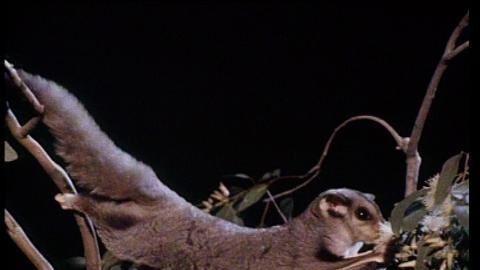Space to play or pause, M to mute, left and right arrows to seek, up and down arrows for volume.
SUBJECTS: Science
YEARS: F–2
Don Spencer shows us a small mammal called a sugar glider.
Take a close look at its big eyes and furry tail.
See it glide through the air from tree to tree.
Watch the sugar glider eat. Learn how it got its name.
Things to think about
- 1.Imagine a type of possum that can glide through the air. It doesn't have wings like a bird. How do you think it is able to glide from tree to tree?
- 2.Notice the size of this adult sugar glider. Look for the flaps of skin under its body that help it glide. What time of day is the sugar glider feeding? What is it feeding on? Notice how these sugar gliders use their tails.
- 3.Tell someone else about a sugar glider and what it needs to live. Draw types of places (habitats) where you might find a sugar glider. Draw types of places you think you would not find a sugar glider. You could turn this idea into a book titled 'Does a sugar glider live here?'
- 4.Think about how the sugar glider moves. What features (parts of its body) help the sugar glider climb and glide? What features do they have that help them at night? Draw and tell someone else about how a sugar glider moves and is able to come out at night.
Date of broadcast: 26 Aug 1986
Copyright
Metadata © Australian Broadcasting Corporation and Education Services Australia Ltd 2012 (except where otherwise indicated). Digital content © Australian Broadcasting Corporation (except where otherwise indicated). Video © Australian Broadcasting Corporation (except where otherwise indicated). All images copyright their respective owners. Text © Australian Broadcasting Corporation and Education Services Australia is licensed under a Creative Commons Attribution-ShareAlike 4.0 International License (CC BY-SA 4.0).
Posted